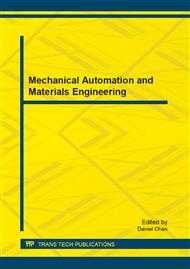p.434
p.439
p.444
p.449
p.453
p.458
p.465
p.470
p.474
Design and Preparation Method of Fiber Optoacoustic Effect Device Used for Artificial Optical Cochlea
Abstract:
Laser can stimulate sound wave, its possible for fiber laser to evoke neural activity safely and produce the auditory perception, this acts as the electrode role in cochlear implant. Moreover, the laser is characterized by definite direction and optical signal between adjacent fibers dont readily interfere. Therefore, optical fiber cochlear implant based on optoacoustic effect is promising. The design and preparation of an experimental system based on optoacoustic effect is introduced in this paper. The selection of laser source and the control methods of optical signal were discussed, and testing results of the fiber optoacoustic effect, including the time domain waveforms and spectrograms of the evoked optoacoustic sound were given. Also, a preliminary discussion for the extended fiber array system applied in artificial fiber cochlea as an alternative to electrodes stimulation was progressed.
Info:
Periodical:
Pages:
453-457
Citation:
Online since:
August 2013
Authors:
Keywords:
Price:
Сopyright:
© 2013 Trans Tech Publications Ltd. All Rights Reserved
Share:
Citation:


